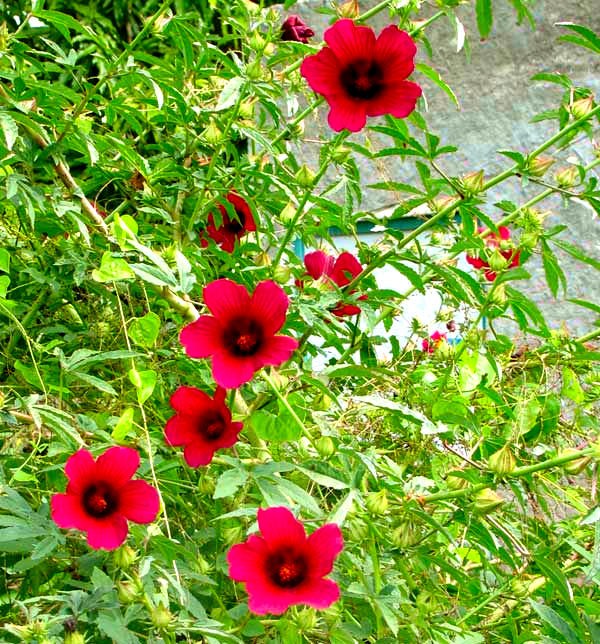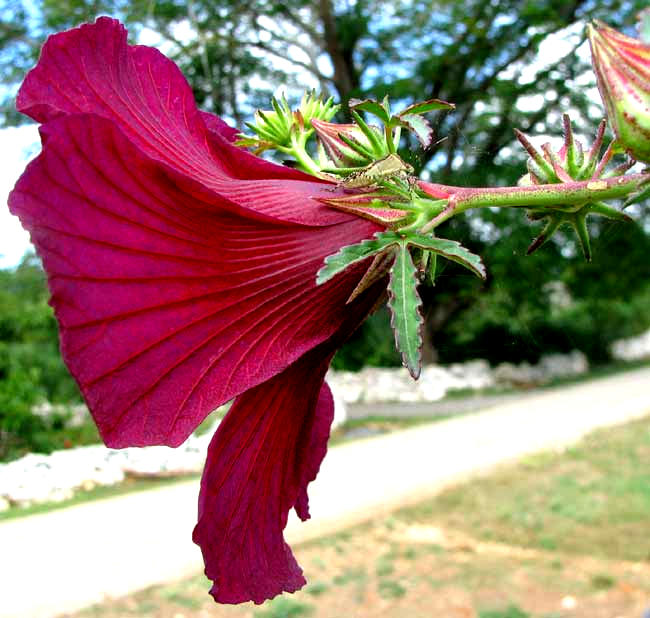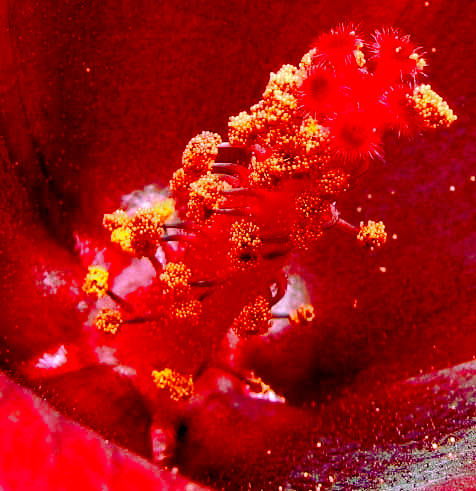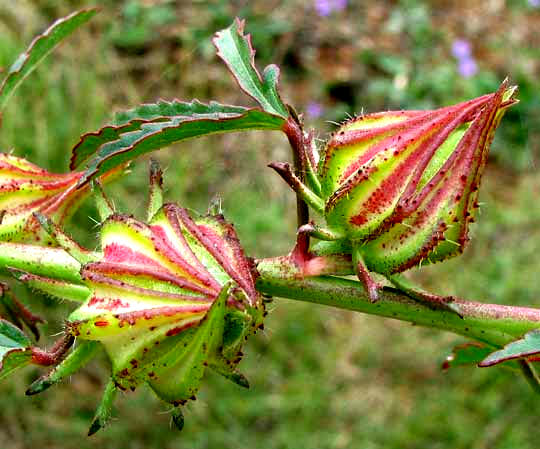Excerpts from Jim Conrad's
Naturalist Newsletter

from the December 5, 2010 Newsletter issued from Hacienda Chichen Resort beside Chichén Itzá Ruins, central Yucatán, MÉXICO; limestone bedrock, elevation ~39m (~128ft), ~N20.676°, ~W88.569°
KENAF THE WONDER PLANT
About 10 kms north of Pisté, on the south side of the little Maya village of Xokempiich, something came up I'd not seen elsewhere: A much-branched, herbaceous bush about ten feet tall (3 m) with stiff stems and palmately compound leaves looking a lot like those of Marihuana plants, but with large, deep-burgundy, hibiscus-type flowers. You can see the whole thing above.
A side view of a five-inch-across blossom (13 cm) is shown below:

A view inside the blossom showing typical hibiscus-flower anatomy -- stamens with filament bases uniting into a cylindrical staminal column surrounding the slender style, the style topped by five spreading style-branches, each tipped with a fuzzy stigma -- is below:

After pollination, the corollas fall off leaving behind ovaries which mature into nearly spherical fruits enveloped by stiff, bristly sepals, as seen below:

Most of the world knows this plant, probably native to southern Asia, as Kenaf, which is a Persian name. Among its English names are Brown Hibiscus, Hemp Hibiscus, Bimli, Ambary and Deccan Hemp. It's HIBISCUS CANNABINUS, an old Linnaeus name, so even Linnaeus thought that vegetatively it looks like Marijuana/ Cannabis. By the way, vegetatively it also looks like the Okra plant. While Kenaf isn't related to Marijuana, it turns out that Okra is indeed a close cousin. The most common Kenaf cultivar appears to be white-flowered, but other colors, such as our burgundy one, are planted.
Once again we've stumbled onto a plant I've never heard of but, once the name was known, Googling the name revealed that I'd found a famous, very important species. Wikipedia has a fine Kenaf page.
On that page you'll see that Kenaf's fiber makes good paper, rope, carpet backing and burlap. Silage made with it for livestock consumption has a high protein rating, ranging from 16 to 23%. Kenaf seeds yield oil that can be used for cooking, cosmetics, biofuel and lubrication